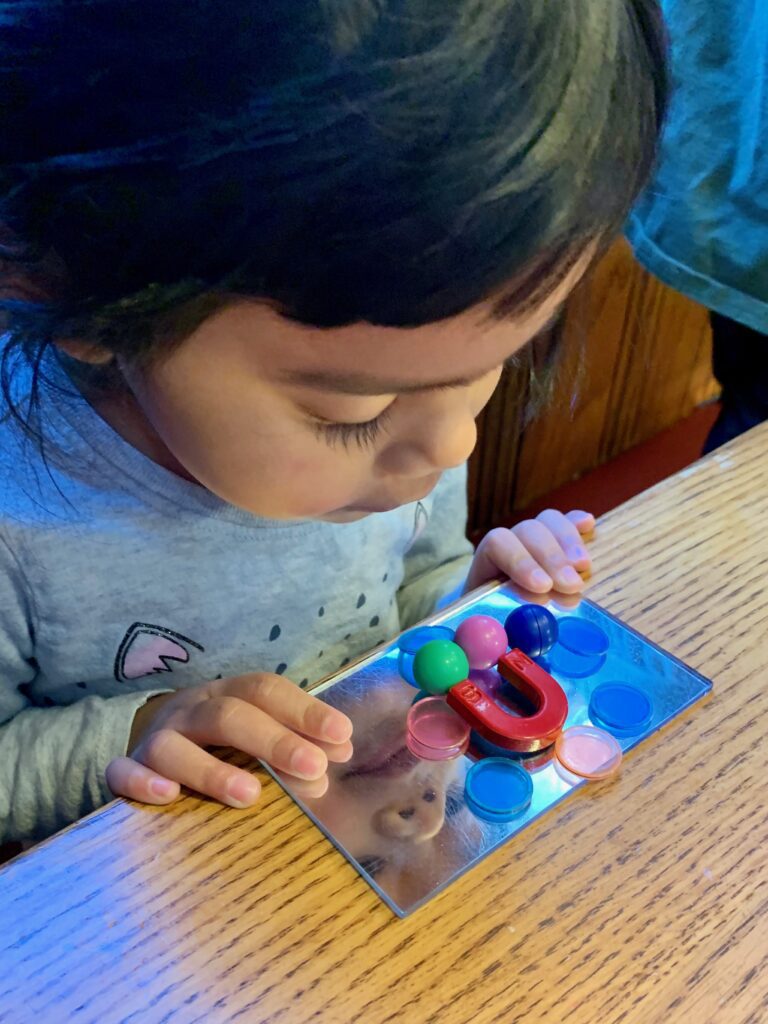Magnetic Magic
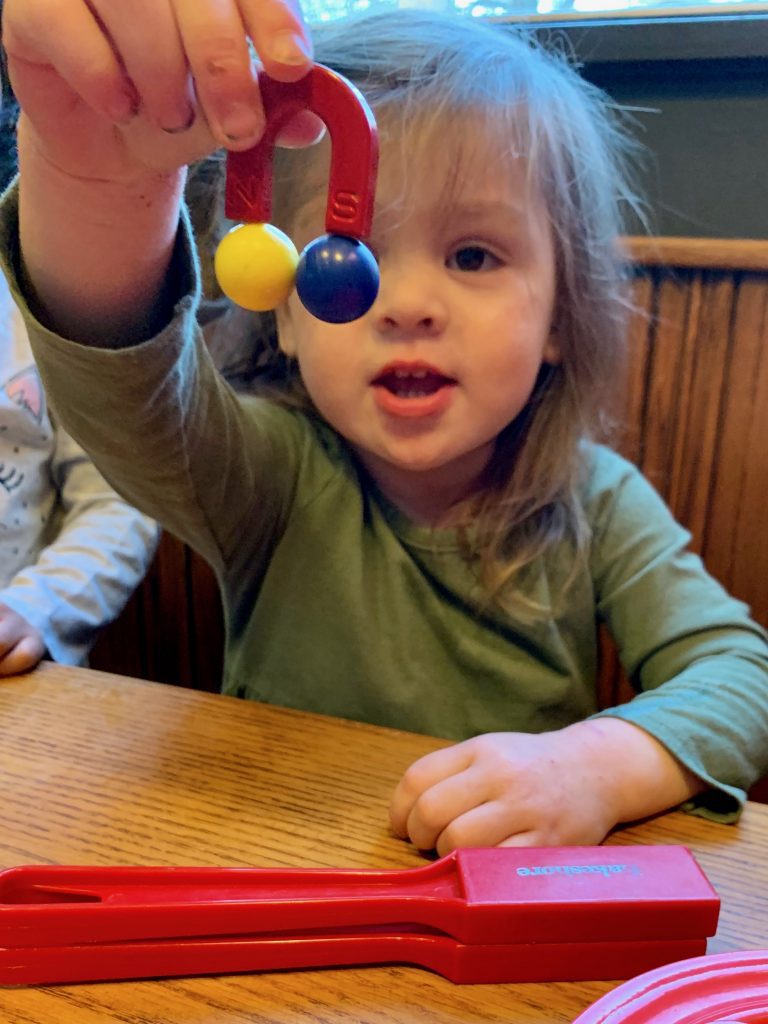
"Look!" squeals three-year-old Eleanor. "I can pick up these two balls. It's magic!"
Have you ever seen young children playing with magnets? The "magical" properties of magnets never fail to captivate early learners and spark a play buzz.
Children learn by investigating, observing and figuring out how things work. Magnets fuel that curiosity in a way that is simple and accessible.
As they explore the properties of magnets through play, children develop a deeper understanding of scientific principles by asking questions such as "why" magnets stick together and "how" magnets work.
Magnetic play helps lay the foundation for further investigations as we guide our children through activities such as developing hypotheses and theories, solving problems and making predictions.
By observing and studying cause and effect, our young explorers can begin to develop a basic understanding of concepts such as magnetic attraction, magnet strength and magnetic forces and fields.
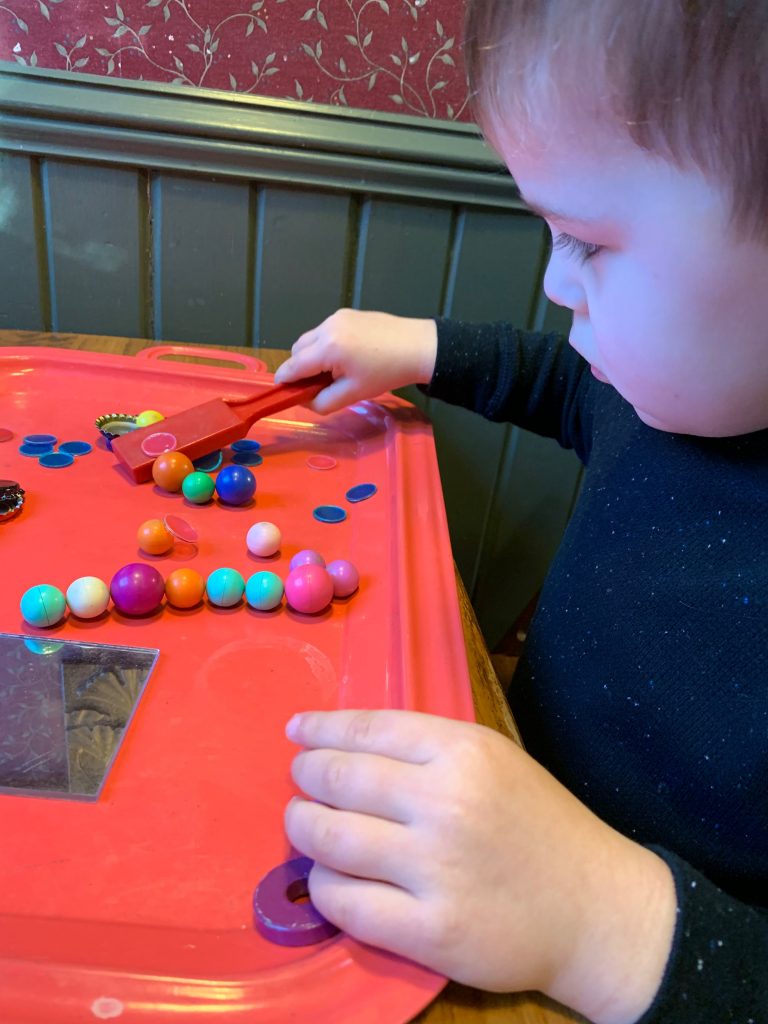
Magnet play is a great way to introduce science, technology, engineering and math (the STEM disciplines) into your child's life.
A few words of caution: Magnets are dangerous if ingested. You know your child better than anyone. If you are at all concerned, it's best to err on the side of caution and use large magnets that cannot possibly fit into a child’s mouth. By carrying a giant horseshoe magnet around the house to see what sticks, your child will learn just as much about the magic of magnetic forces.
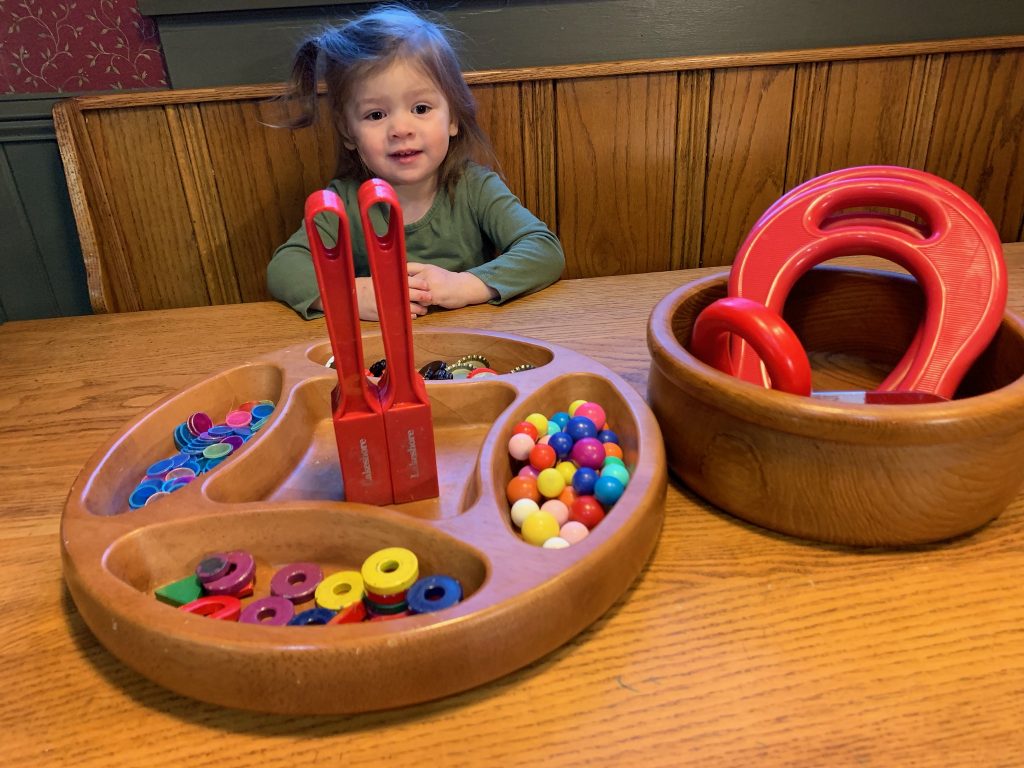
To set the stage for magnetic exploration, I put out a wooden tray filled with magnetic wands and magnetic objects in a variety of shapes and sizes. Then I give each child an aluminum tray to define the play space and keep the magnetic balls from rolling off of the table onto the floor.
When children add magnets or remove them from the tray, they learn about math concepts such as more, less, off and on. They also learn about patterns, shapes and sizes. Wooden condiment trays are also useful for easy cleanup and storage.
Making a prediction means focusing on what we think will happen next based on our prior knowledge. It’s considered a guess if we have no prior knowledge.
"Is this object magnetic?" We can help children develop their predictive skills through magnet play when we ask them to predict whether an object might be magnetic.
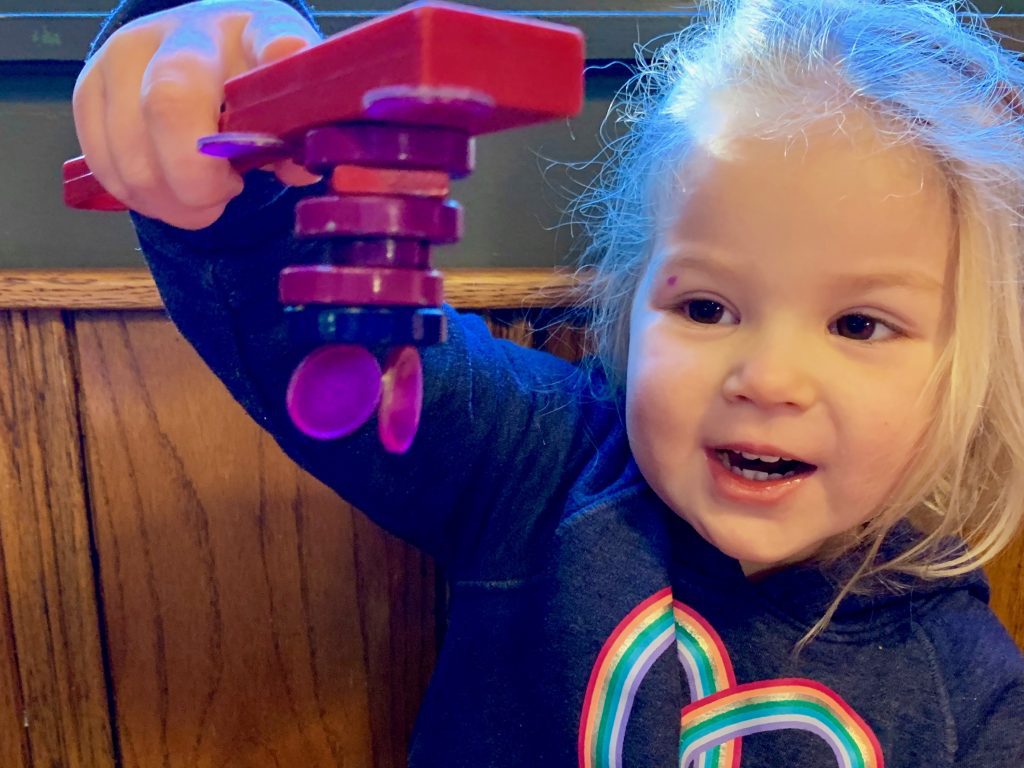
When children play with magnetic wands and balls, they love to "catch" the balls on the wand and count how many they have.
Playing with magnets is a powerful math and science activity because it invites investigation and exploration and provides a fun and engaging incentive for children to make predictions and observe outcomes.
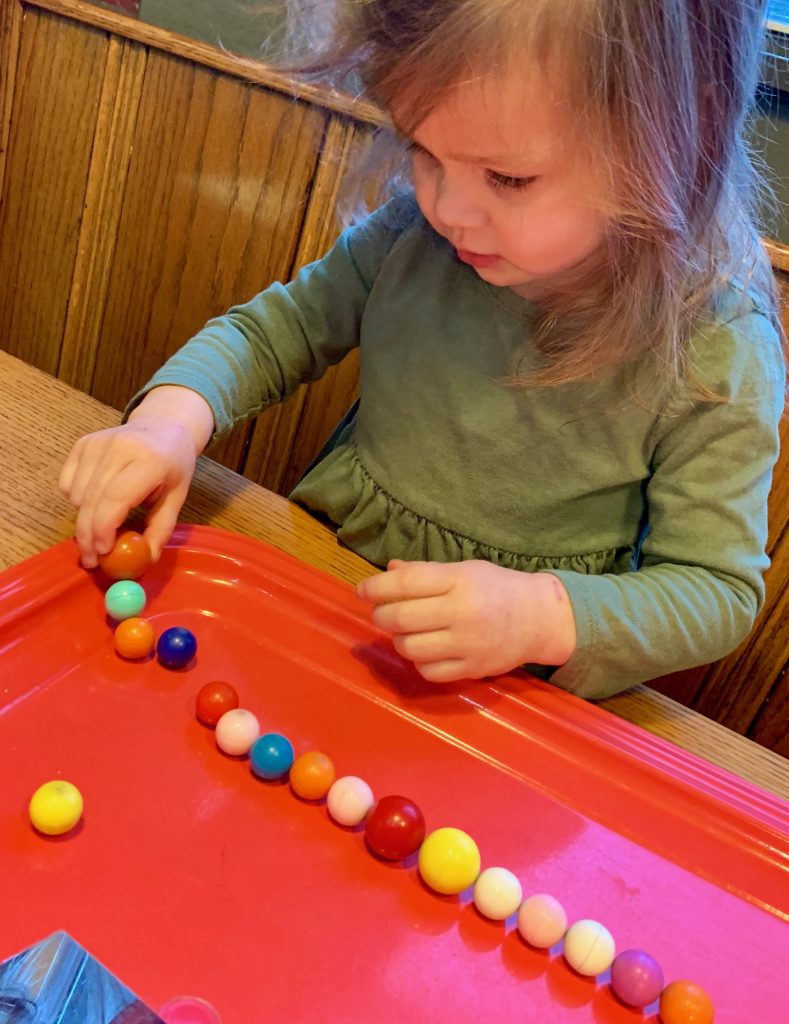
Give children ample time to investigate magnetism and work through their theories. The luxury of time for extended investigations and focused play is a gift that children may not get in their future academic lives.
You'll be amazed by the amount of time that children will devote to investigating the magnetic properties of the objects on their trays.
Magnet play is a calm, quiet and very focused activity that will slow down even our most frenetic friends.
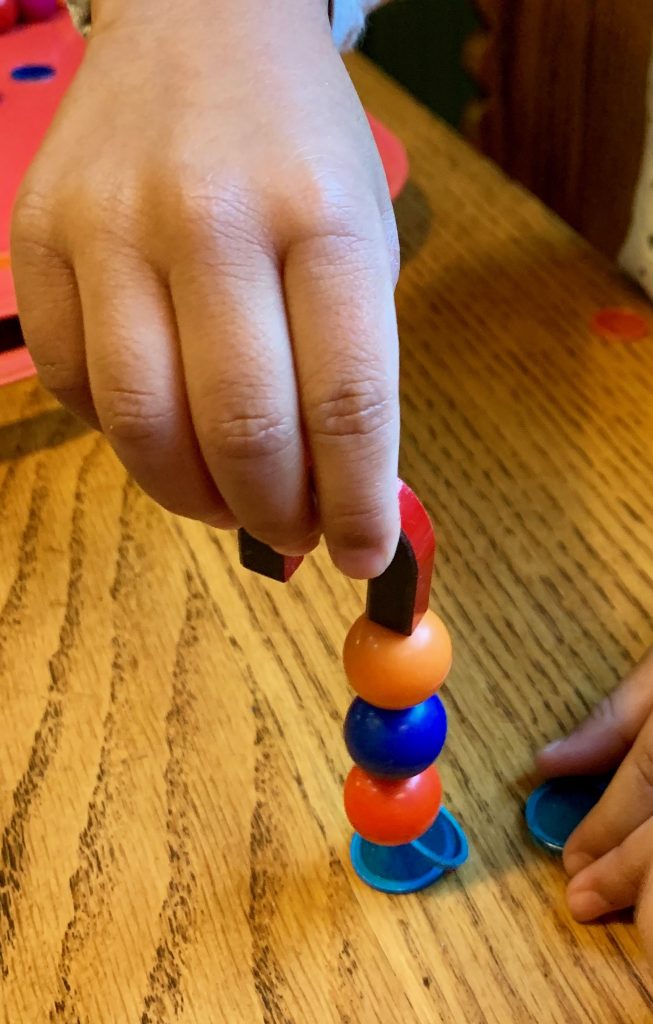
Your child may be focused on understanding how the forces pull magnets together. We keep it pretty basic, but the library is a great resource for books that address the properties of magnetic forces for early STEAM explorers.
For tips on setting up a magnet tray or expanding on this idea, check out Be a Magnet Detective in our activities section or read the Early Science Matters blog post, The Magical Field of Magnets to see how one group of young magnet explorers explores the magic of magnets outdoors.
